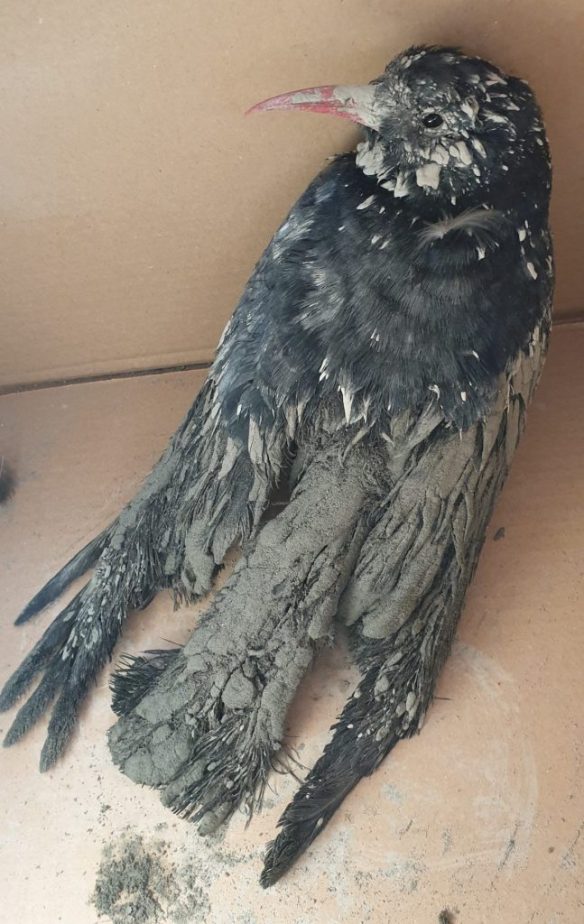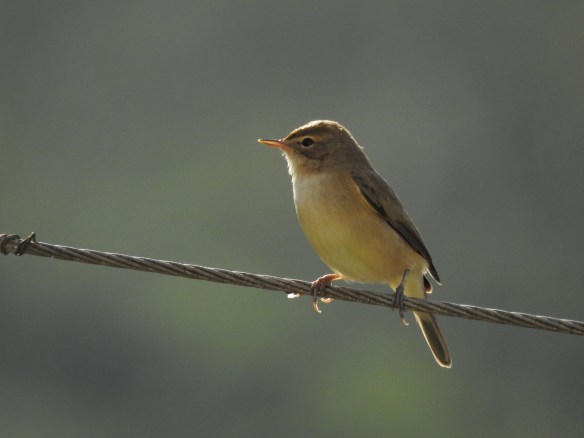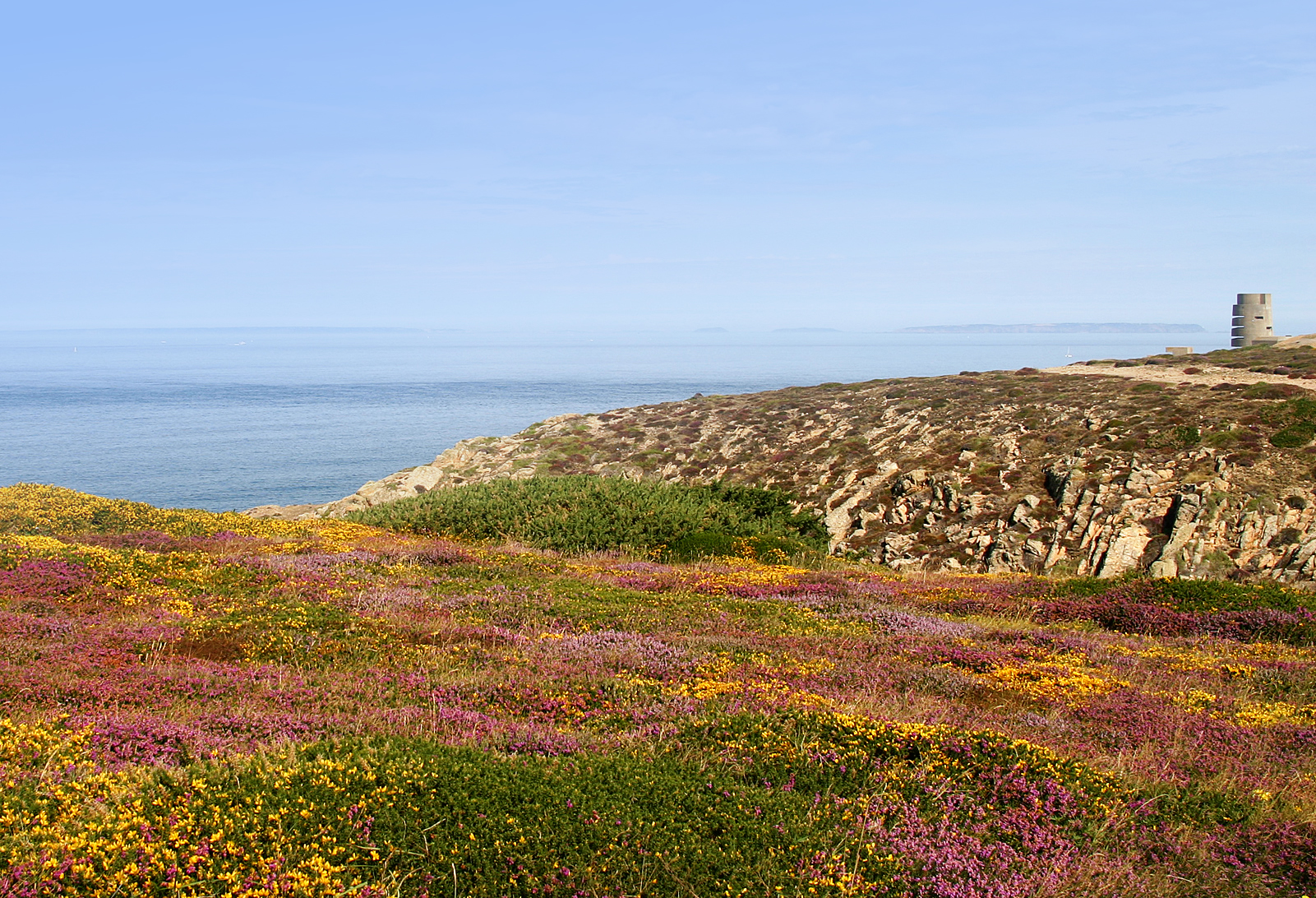Bye-bye Black(bird)
There appears to be a sneaky reshuffle within the pairings. Black, a female released in 2013, has not been seen since 25th March. We were hoping it simply meant she was incubating eggs. However, her partner Green started showing up with another female Pyrrho along with her partner at the time, Betty. As the month drew to an end the bond between Green and Pyrrho had strengthened, Betty was making moves on another female and Black still had not been seen.
Black has an interesting past. She was one of the first seven choughs to be released into Jersey. Males were few and far between in the early years. Her chance for a breeding partner came in 2016 after Dusty’s mother disappeared conveniently freeing up Green. Black took over both territory and nest site and laid a clutch each year without fail.
She hasn’t had much luck though. The 2018 clutch failed to produce anything and both 2019 chicks died shortly after fledging. Back in 2017, we named her only surviving chick Lil’Wheezy because both parent and chick showed signs of a syngamus infection. Lil’Wheezy disappeared before the year was out.
You start to wonder if Black’s health was compromised over the years making her more susceptible to predation. If she still hasn’t been seen by the end of May we will assume she has perished.
Team shuffles
Throughout April the Sorel supplemental feeds were covered by Glyn, his daughter Mairi, volunteer Sarah, Zoo student Beth and myself. All student placements at Durrell were given the option of returning home before lockdown. Beth very kindly decided to stay in Jersey and became an integral part of the Bird team.
Monitoring nest sites, foraging sites further afield, and potential new nest sites was limited to what I could achieve in my free time. Thankfully, Sue Mueller wished to volunteer with the monitoring as her permitted outdoor activity. Already a keen wildlife photographer and chough lover she was happy to spend her time sat at Sorel Point or walking sections of coastal path.
April’s nesting progress

COVID restrictions limited the amount of nest observations in the quarry this season. Photo by Liz Corry.
Sue’s observations helped us to confirm eight active nest sites this month. Most were last year’s sites. Of note, we think Bo and Flieur might be nesting in the same area Flieur used with her previous partner. Sue couldn’t get a clear ID on the rings. The pair’s behaviour suggests Flieur is incubating, as are several other females.
It is doubtful that we will be able to determine hatching dates which in turn will restrict ringing at nest sites. We will be reliant on fledglings following their parents to the supplemental feed site in order to trap and ring them.
Aviary observations
Betty and Zennor both lost rings this month. At the feed on 12th April it was clear Zennor had lost her striped plastic ring. Betty had lost his black ID ring. When possible, we will try to catch up these birds and replace rings. For now, we can still distinguish them from others in the flock.
Wally flew in to feed on the same day with her hind digit of the left foot stuck in her ring. Pretty sure she did this last year during the breeding season. She will need to be caught up to free the digit and assess the condition of the rings.

Waiting for choughs to enter the aviary in order to catch and replace leg rings. Photo by Liz Corry.
Away from Sorel
No definitive news on the Plémont territory other than they are still in the area. My guess is that Xaviour has gone leaving Beaker and Beanie Baby holding territory. Gone where or how we don’t know. I suspect Beanie Baby has chosen her own place to nest; the exact location will be kept confidential.
Reports continue to come in of choughs around Les Platons. I haven’t managed to see them there yet. Not that the dogs are complaining about their new evening routine.

East of les Platons, has patches of suitable chough habitat tucked in between woodland and bracken. Photo by Liz Corry.
I did have plenty of sightings of a choughs at the Zoo. Often just a single bird, a few times it has been a pair flying over. The single bird (assuming it is the same individual) likes to hang out on the Manor House roof, particularly Lee Durrell’s chimney.
Several times whilst servicing Kirindy or the flamingos I have heard a call, looked up, and seen a chough fly overhead. The Durrell staff having to self-isolate at the campsite have also been kept entertained by the visitors – incidentally the only visitors allowed to the Zoo in April due to lockdown restrictions!
Further south, we have had regular reports of choughs visiting the sand dunes, Gorselands, and Corbière.
More often than not it has been a pair spotted, sometimes more. I think a pair have established a territory again in the south west. Hopefully they will have more success than the last pair who kept relying on the Sorel feed for sustenance.
Habitat around Corbière’s WW2 Naval tower provides food for choughs. Photo by Liz Corry.
One of their problems, I suspect, was the amount of disturbance they received when trying to find food in areas with heavy footfall. And paw-fall. And car-fall! Dog walkers, tourists, tourist coaches, cars, vans, children tobogganing down the dunes (a designated SSI site) all mean that birds are frequently disturbed. Maybe lockdown will have its merits. Fingers/feathers crossed!

The track to Corbière lighthouse attracts visitors for the views, WW2 bunkers, and the obligatory ice cream van. Photo by Liz Corry.
Zoo moves
On 5th April, we managed to catch the remaining juvenile in SORG and move her to the off show aviary to join her sibling. This meant Tristan and Penny could begin nesting. Lots of activity carrying twigs, wool, and moss into the nest box. Penny began egg laying as April came to a close.
Graham Law
 We are sad to report the death of one of our keenest academic supporters. Dr Graham Law of the University of Glasgow passed away on 9th April. Graham made several visits to Jersey in the early 1980s but on a return visit to the Island in 2016, he took a great interest in the chough reintroduction project and helped establish links with the chough team at the University.
We are sad to report the death of one of our keenest academic supporters. Dr Graham Law of the University of Glasgow passed away on 9th April. Graham made several visits to Jersey in the early 1980s but on a return visit to the Island in 2016, he took a great interest in the chough reintroduction project and helped establish links with the chough team at the University.
Graham worked as a zoo keeper for 23 years before moving to academia but never lost his enthusiasm for bettering the lives of animals in his care. He taught on the Glasgow Universities Masters course on Animal Welfare Science, Ethics and Law and was involved in many environmental enrichment projects including a remarkable one for killer whales. All of us who knew Graham and were so influenced by him in our life and careers will miss him deeply. Our thoughts are with Rosie and his children.








































